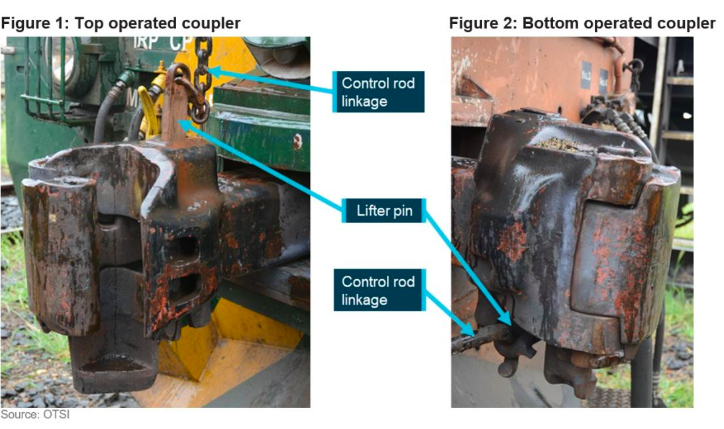Lessons Learned: Functionality of Automatic Couplers

Automatic couplers become the source of investigation after a grain train collision.
A recent investigation into a grain train collision near Tamworth, New South Wales, has resulted in a safety advisory notice being issued to rolling stock operators on the often‑misunderstood functionality of automatic couplers.
On January 6, 2022, three banking locomotives separated from a grain train, and then collided with the rear of the train when it stopped, resulting in substantial damage.
The accident was investigated by the Office of Transport Safety Investigations (OTSI), which investigates rail accidents in New South Wales on the ATSB’s (Australian Transportation Safety Bureau) behalf.
It found the train separation was highly likely due to the knuckle on the bottom operated coupler of the lead banking locomotive remaining unlocked after coupling.
Notably, it was found the train crew had not performed a “stretch test” after attaching the banking locomotives.
The investigation noted key personnel involved in the coupling procedure had a misunderstanding of how an aspect of the automatic coupler’s safety design features operated.
Subsequently, a safety advisory notice has been issued to rolling stock operators to ensure workers have an understanding of coupler operation.
Rail safety worker competency assessments
The investigation also found that while the train crew had been assessed as competent in shunting during both vocational education and training (VET) and enterprise-based assessments on several occasions, the supporting evidence collected was usually limited to a single check box that the task had been ‘performed correctly’.
As a result of these findings, a second safety advisory notice was issued to rail transport operators, and registered training organisations acting on their behalf, to review and validate their rail safety worker competency assessments.
The SAN advises that relevant industry members should validate their competency assessments to ensure their assessment tools, processes and judgements are reliably meeting the principles and requirements of competency-based training and assessment.
Content/image credit: ATSB, “Rail safety worker competency assessments,” Safety Advisory Notice, publication date: 8/20/2024, investigation number: RO-2022-001.



